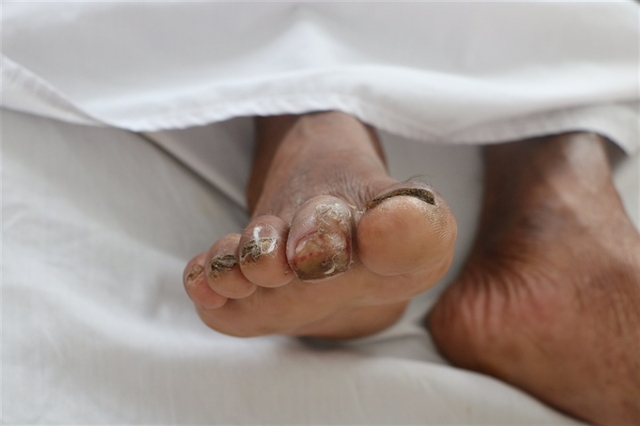 Society
Society


|
| A Whitmore’s disease patient in Hà Tĩnh Province suffers critical abscess. — VNA/VNS Photo |
HÀ NỘI — The latest case of Whitmore’s disease, also known as melioidosis, was reported at Hà Nội’s Đức Giang General Hospital on Monday.
After 10 days of illness, the patient was treated at hospital for high fever and headaches and he tested positive for melioidosis.
Cases of the rare disease have risen since the start of this year’s rainy season with at least 20 cases reported.
Last week, Nghệ An Province Maternity and Pediatric Hospital admitted three patients in critical conditions with abscesses and inflammations of their parotid glands.
They were first treated at home because the symptoms are similar to mumps, but were transferred to hospital when their conditioned worsened.
On September 12, another case of Whitmore’s disease was reported in the central province of Hà Tĩnh.
The patient got infected after being exposed to contaminated soil.
Whitmore’s disease is caused by a bacterium called Burkholderia pseudomallei which exists in contaminated water and soil.
The most common transmission to humans and animals is via direct contact with the infection, especially through skin abrasions or inhalations of dust particles containing bacteria.
According to Nguyễn Văn Kính, director of the Central Hospital of Tropical Diseases, Whitmore’s disease was first reported in Việt Nam in the 1950s and only appeared in some provinces.
The incubation period from the exposure to the bacteria to the appearance of first symptom takes two to 21 days. However, once the disease activates, it progresses rapidly; an infected patient might be killed in only 48 hours after being hospitalised.
“Some researches show that eating food containing Burkholderia pseudomallei can lead to the infection,” Kính told Kinh tế & Đô thị (Economic and Urban Affairs) newspapers.
“However, there is no evidence of disease transmission among humans and from animals to humans through the air.”
The disease is common among people having direct contacts with soil and open wounds which allow bacteria penetration, causing abscess, inflammation and even sepsis or lung damage.
Patients with diabetes or chronic lung, heart, or kidney-related diseases are more vulnerable to the bacteria. They may suffer multiple organ failure leading to death if infected.
Common symptoms include fever, weight loss, chest pains, headaches, seizures, and muscle pain.
“Whitmore’s disease is called ‘an impostor’ as it does not have any clear clinical manifestation and is usually misdiagnosed to pneumonia, sepsis or muscle abscess,” Kính added.
Doctors have to test blood, pus, sputum, urine or cerebrospinal fluid to establish an accurate diagnosis.
Dương Thanh Bình, director of Việt Nam – Cuba Friendship Hospital in Quảng Bình Province, said they had not received any patient with Whitmore’s disease after a rumour of three infected people was spread on Facebook.
The provincial police also said they would investigate the origin of the fake news.
It is difficult to treat the disease as doctors have to prescribe high-dose antibiotics for patients in at least two weeks then maintain the use in three to six following months.
Without the right dose, regime and monitoring, a patient can relapse and die.
The treatment and monitoring process takes time and can be expensive.
Kính said many people had given up, leading to failures in treatment and raising the fatality rate to about 40 per cent.
At present, there is no vaccine for the disease.
Therefore, it is essential for people to wear masks in polluted areas, wear boots and protective clothing when in direct contact with soil or mud. — VNS




